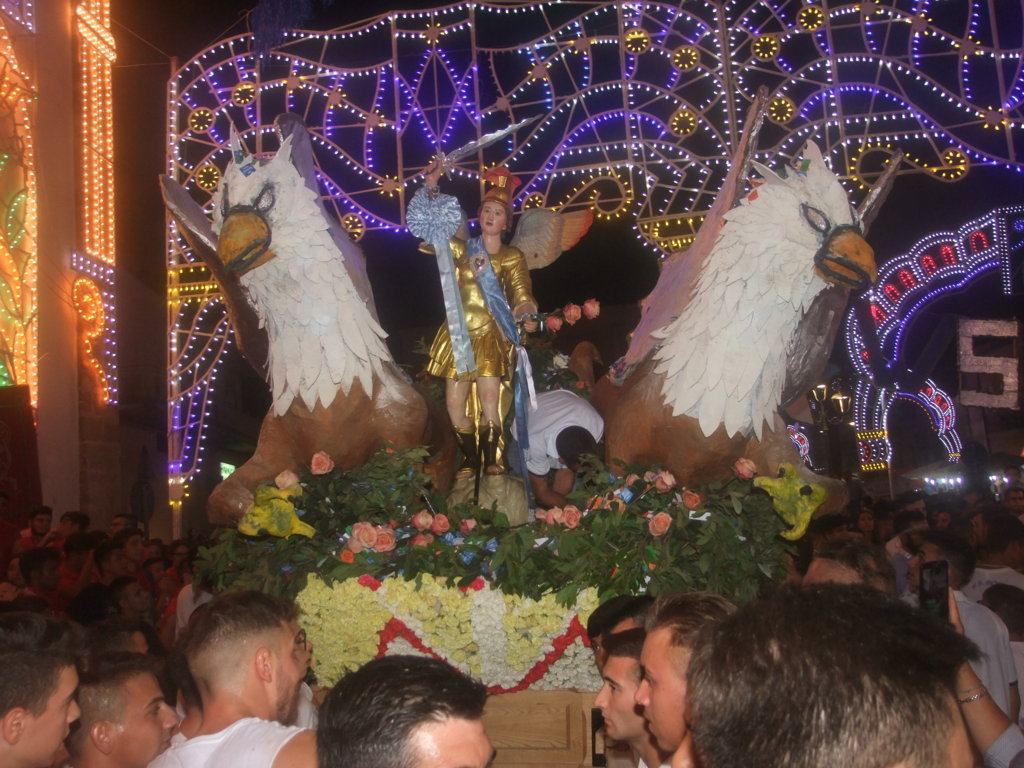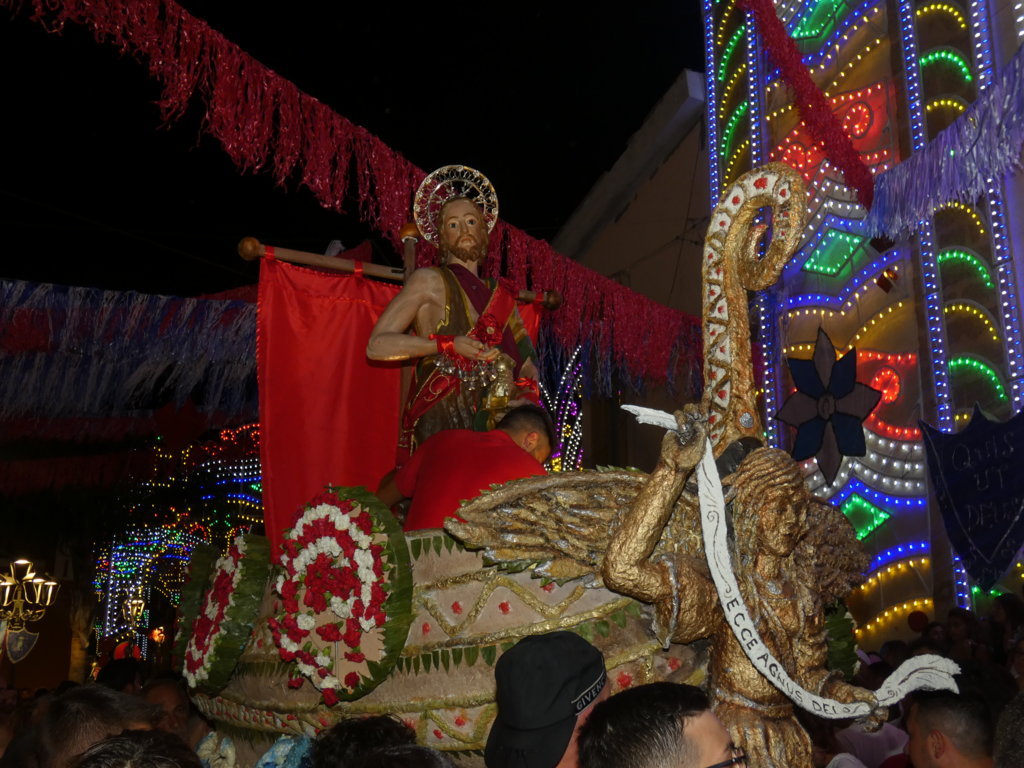Decorations of the Vare of the Rigattiate in Calamonaci
The decoration of the vare—the platforms bearing the statues of Saint Michael and Saint John during the Rigattiate—is a primary focus of rivalry between the confraternities of the Sammichilara and the Sangiuvannara.
This competition began in the late 1950s when the feast was still held in May. At the time, floral decorations were handled by florists from nearby Ribera, with no special demands. The rivalry started when a devout man, Francesco Vacante, inspired by his faith in Saint Michael, used his artistic skills—painting, clay modelling, and wood carving—to decorate his confraternity’s vara.
Vacante was thereafter tasked annually with this work. His early technique involved creating small architectural structures or animal forms, especially birds, using river reeds and disa (ampelodesma), later replaced by wire. These frames were wrapped in tight straw and decorated with flowers, secured with small wood or wire supports, and adorned with laurel leaves.
The craft evolved as the rival confraternity joined the competition, gradually incorporating papier-mâché, wood, iron, paint, and eventually steel and polystyrene. Still, laurel, flowers, and climbing plants like bougainvillea remain central.
The themes of the decorations generally lack a fixed anthropological meaning. Sometimes they echo the saints’ hagiographies—albeit minimally—but more often they reflect imaginative designs, with architecture draped in greenery and blooms at the forefront.
This creative process became a point of cohesion, particularly among youth in both confraternities. At one point, secrecy was so intense that warehouses used for building decorations became improvised workshops of intangible folk art, where skills were passed down informally.
Over time, these decorations have come to represent how external aspects of popular religious festivals evolve alongside the social temperament and aesthetics of their era. They are now an intrinsic and indispensable part of the patronal feast’s identity.
This element has been included in the Register of Intangible Heritage of local interest of the Municipality of Calamonaci, as part of Intervention 6 “Activation of the Observatory on the Intangible Cultural Heritage of the Territory through the application of the REIL methodology – Register of Intangible Heritage of Local Interest”, within the “ Metasicani effetto farfalla” project, funded by the NRRP (National Recovery and Resilience Plan), Mission: Digitalisation, innovation, competitiveness, culture and tourism, Component: Tourism and culture 4.0, Investment 2.1 “Attractiveness of villages.” CUP: J79I22000180006.



